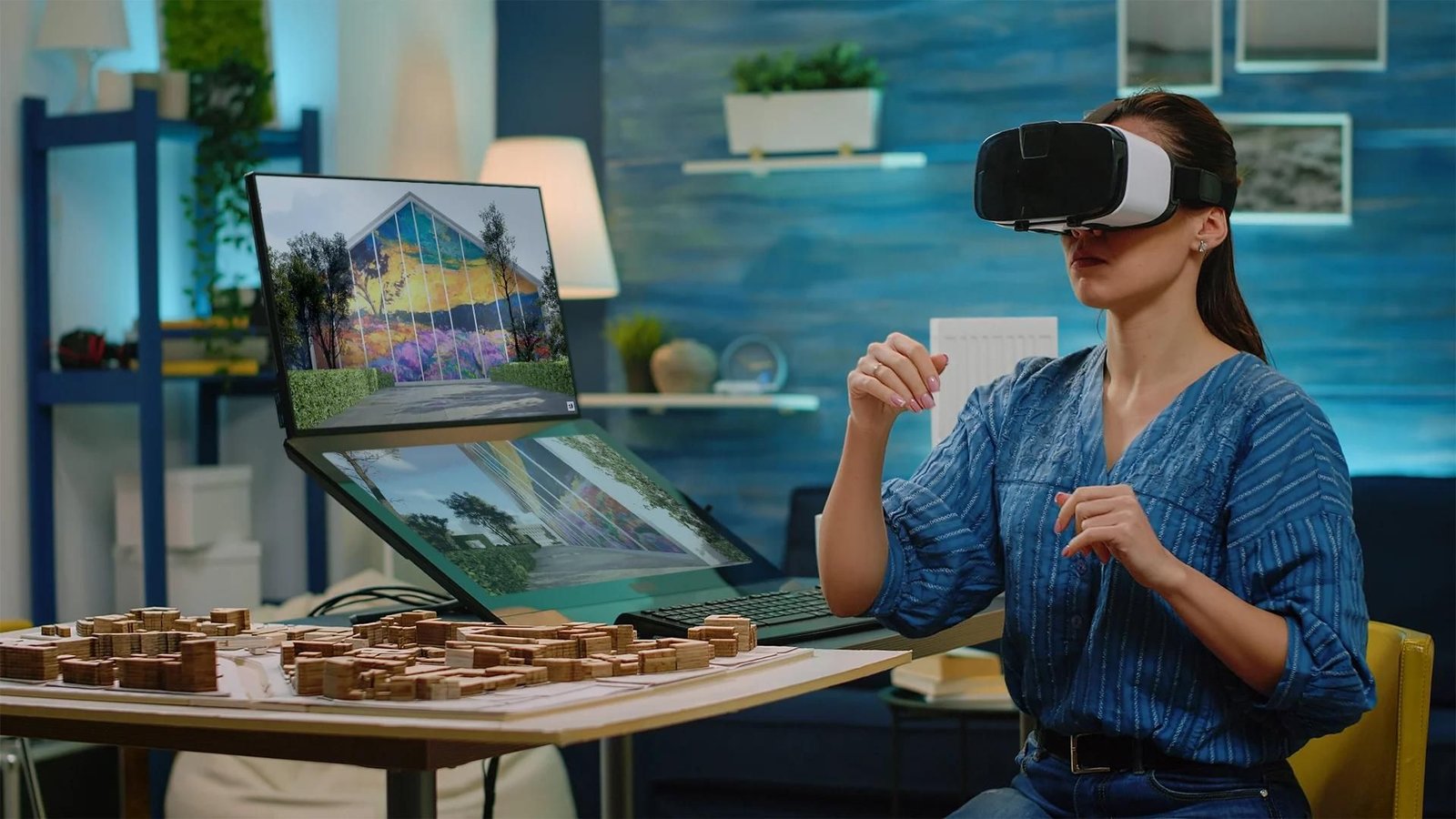How to use Virtual Reality in Architectural Design
Have you ever wondered how architects bring their designs to life before a single brick is laid? Virtual reality in architectural design is changing the game, allowing architects to step inside their creations and fine-tune every detail. Let’s explore how virtual reality is revolutionizing the way buildings are designed and why it’s more than just a fancy tech gadget.
Visualizing Concepts: Seeing is Believing
Virtual reality (VR) lets architects go beyond blueprints and 2D drawings. It allows them to create immersive 3D models of buildings that clients and stakeholders can walk through as if they were already built. This helps everyone involved get a clear picture of the final product, making it easier to make decisions and understand how spaces will look and feel.

Design Iteration: Perfecting Every Angle
In traditional design processes, architects rely on imagination and technical drawings to visualize spaces. With VR, they can experience scale, proportion, and spatial relationships firsthand. This ability to inhabit their designs in VR enables architects to spot potential issues early on and make adjustments in real time, ensuring the final building meets both aesthetic and functional requirements.
Collaborative Decision-Making: Bringing Teams Together
Architectural projects involve many stakeholders—clients, engineers, designers, and builders—all with different perspectives and priorities. VR bridges these gaps by creating a shared virtual environment where everyone can interact with the design. Collaborators can explore different design options, provide feedback, and make informed decisions together, leading to more cohesive and successful projects.
Enhancing Client Engagement: Turning Visions into Reality
For clients, understanding architectural plans can be challenging without technical knowledge. VR simplifies this by offering a realistic preview of the finished project. Clients can “walk through” their future offices, homes, or public spaces, making informed choices about layouts, materials, and finishes. This interactive experience builds confidence and excitement, fostering stronger client-architect relationships.
Realistic Simulation: Testing Functionality and Flow
Architecture isn’t just about looks; it’s also about functionality. VR allows architects to simulate how people will move through spaces, testing everything from room layouts to accessibility. This simulation helps optimize designs for efficiency and user experience, ensuring that buildings are not only beautiful but also practical and user-friendly.
Cost and Time Savings: Getting it Right the First Time
In traditional architecture, changes late in the design process can be costly and time-consuming. VR reduces these risks by catching potential issues early on. By identifying problems before construction begins, architects can minimize rework, optimize material usage, and streamline project timelines. This efficiency translates to cost savings and faster project delivery, benefiting both clients and architects.
Education and Training: Preparing Future Architects
VR is also transforming architectural education and training. Students can now experience architectural principles in a realistic virtual environment, practicing design concepts and exploring historical landmarks as if they were physically present. This hands-on learning enhances understanding and creativity, preparing the next generation of architects for real-world challenges.
Sustainability and Innovation: Pushing Boundaries
As sustainability becomes increasingly important in architecture, VR plays a crucial role in exploring innovative design solutions. Architects can test renewable energy systems, green building materials, and passive design strategies in virtual environments to optimize energy efficiency and environmental impact. VR empowers architects to push the boundaries of sustainable design without risking real-world resources.
Conclusion
Virtual reality in architectural design isn’t just a tool for architects; it’s a catalyst for creativity, collaboration, and efficiency. By transforming how designs are visualized, communicated, and executed, VR is reshaping the architectural landscape. As technology advances and VR becomes more accessible, its potential to revolutionize architecture—from concept to completion—will only continue to grow. Embracing VR means embracing a future where buildings are not just structures but living, breathing spaces that enrich lives and communities.
So, next time you see a groundbreaking architectural design, think about the virtual reality that helped shape it—a testament to innovation shaping our built environment one virtual brick at a time.



